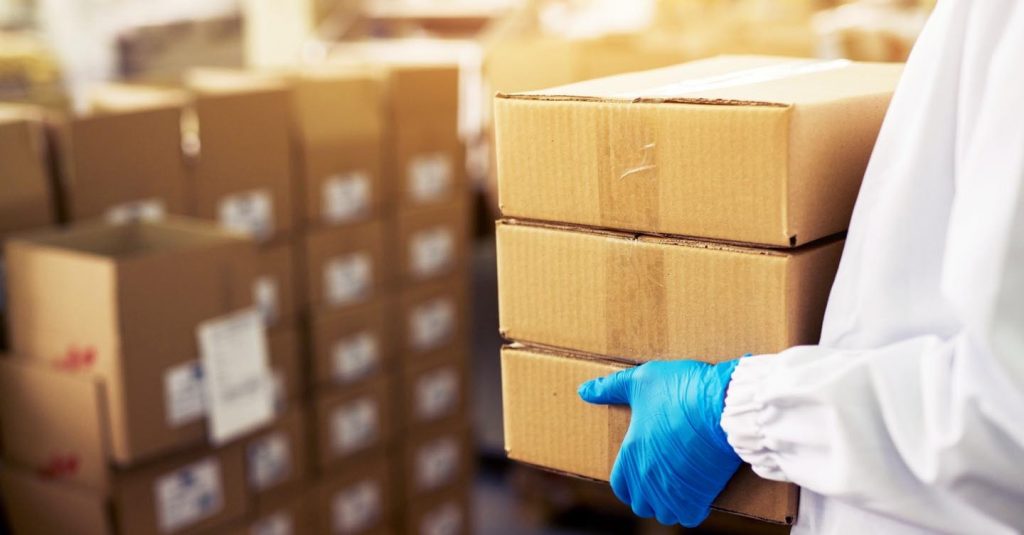
Zuum's Clients have been able to achieve 18 LPD Per Operator, Accomplishing more with fewer resources.
For brokers in the logistics industry, the use of an outdated transportation management system (TMS) ...Read More

Logistics News

After months of reconfiguring our daily lives, we as Americans can breathe a small sigh of relief. The Food and Drug Administration (FDA) has approved the emergency use authorization of the Pfizer-BioNTech vaccine for COVID-19. Now that there is the first real answer to the virus that has affected all of us, how can it be made available to people that need it most?
Healthcare workers and the elderly across our country are of course most at risk. So the announcement has initiated the highly coordinated endeavour between public entities and corporations to deliver vaccines to hospitals and health clinics around the country. To coordinate the transportation to critical locations, this venture is led by the Department of Defense under Operation Warp Speed.
The deputy chief of staff for policy at the Department of Health and Human Services, Paul Mango, clarifies the government’s role in sourcing and distributing all necessary supplies - such as “needles, syringes, swabs, adhesive bandages, dry ice and trucks” needed for inoculation sites and managing re-routing of vaccines in transit if they are “at risk of expiring.”
The scale of organizing a logistics and transportation network of this size is not the only challenge. Additional focus is placed on the speed of delivery - as the vaccine developed by Pfizer and BioNTech “must be stored and shipped at temperatures of minus 94 degrees Fahrenheit (-70 Celsius), otherwise it will go bad.”
Pfizer’s U.S. manufacturing plants located in Saint Louis, Missouri, Andover, Massachusetts, and Kalamazoo, Michigan are responsible for providing a majority of the nation’s only currently available vaccine - and properly packaging the shipments with dry ice. To supplement available supply, United Airlines was the “the first commercial airline to fly the vaccine to the U.S. from Belgium, where Pfizer has a plant.”
Prior to Pfizer’s announcement of the success of their clinical trials, American Airlines, Delta Air Lines and United Airlines worked diligently with government agencies and pharmaceutical companies to evaluate the potential movements of the vaccine once it would become available. They conducted simulations over the summer to ensure the temperature of the transported dry ice would remain low enough, while not posing a danger to pilots, since the evaporation of dry ice "can cause aircrew incapacitation.” As a result, the Federal Aviation Administration “is now allowing United and other airlines to carry up to 15,000 lbs. of dry ice, five times more than the previous maximum amount allowed.”
Other federal transportation agencies have also mirrored these efforts to help accelerate delivery. The Federal Motor Carrier Safety Administration made the decision to suspend “hours-of-service rules that regulate how long truckers may drive.” Carriers specialized in the transportation of pharmaceuticals will deliver the shipments to FedEx and UPS distribution centers. The shipping companies have divided their last-mile delivery networks and are working “together to ensure speedy delivery of COVID-19 vaccines nationwide.”
If this moment in time has taught us anything, it is that the transportation and logistics industry not only provides access to essential everyday supplies, but also has the capability to rise above and execute the largest vaccination campaign in the U.S. Competitors across segments, specifically in transportation, have come together to share the responsibility of delivering the vaccine across the country.
In just a few days, the industry has managed to reassemble operations, adapt to “a rapidly changing, ambiguous, turbulent environment,” and demonstrate a high level of agility and efficiency. Passenger aircrafts were repurposed to move cargo. Two of the largest shipping providers designated distribution territories. Coordination of this magnitude would not be possible without recognizing the extensive planning that commenced in the spring. A person familiar with the Pfizer development mentioned in a statement to the Wall Street Journal that the firm began “setting up the supply chain in March, while the vaccine was still being developed.”
Not all heroes wear capes. They are doctors, nurses, pilots, and truck drivers. Direction, planning, coordination, technology, machines and people - the transportation and logistics industry has played a vital role in igniting a sense of hope and taking the first step towards putting this pandemic behind us.
Sources:
https://www.cnn.com/2020/12/11/business/vaccine-distribution-coronavirus/index.html
https://www.freightwaves.com/news/airlines-logistics-companies-ramp-up-global-vaccine-deliveries